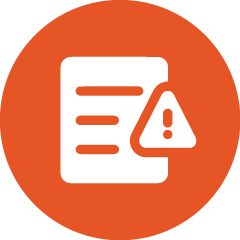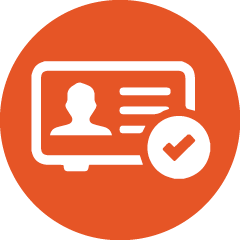Anti-Money Laundering (AML) by Kevin Kerrigan
With respect to specific AML requirements, I often use the 5 Pillars of Compliance as a tool to help accountants understand the policies, controls and procedures they need to put in place to achieve compliance. The 5 pillars and underlying elements should help you answer the “What do we need?” question.
The Consultative Committee of Accountancy Bodies – Ireland (CCAB-I) has developed detailed guidance to help accountants understand their AML obligations within the Irish legal framework. This is another valuable resource when working to further understand your needs and requirements.
With regards to “What do we have?”, you need to look internally within your practice and see what is working well and what needs improvement. Conducting an AML compliance health-check is a good way to identify if there are compliance gaps.
Some good probing questions to lead internal analysis include:
- Compliance gaps:
If you received an AML inspection notice tomorrow, what would you be worried about? Looking at the 5 pillars, are we covered across all areas of compliance? - Current software:
What software do we currently use in the practice? Does it meet all, or some, of our AML obligations? - Record management:
What information do we currently have on our clients? Where is our data stored and how are we collecting it? Do we need to refresh identity documents and proof of address? - Risk management:
Do we have a risk assessment framework in place? Are we appropriately managing risk and documenting due process at a firm-wide and individual client level?
Assign MLRO or equivalent
Awareness of AML legislation
Review risks and consider mitigating actions
Conduct firm-wide risk assessments
PEP/Sanction Screening
Beneficial owner verification
Identify and verify beneficial owners
Apply risk classification & due diligence levels
Client Risk Assessments
Training log and evidence
MLRO Training
Annual Refresher
Staff induction training
External reporting (STRs)
Internal Reporting





Assign MLRO or equivalent
Awareness of AML legislation

Review risks and consider mitigating actions
Conduct firm-wide risk assessments

PEP/Sanction Screening
Beneficial owner verification
Identify and verify beneficial owners
Apply risk classification & due diligence levels
Client Risk Assessments

Training log and evidence
MLRO Training
Annual Refresher
Staff induction training

External reporting (STRs)
Internal Reporting


Management
Software can help store and manage all the relevant documents and records related to AML compliance in a secure and accessible way. This can also help accountants comply with GDPR requirements, by ensuring that they do not collect or store any unnecessary or sensitive data from their clients, and that they delete or anonymise data that is no longer needed.

Assessment
Accountants can assess the risk level of their clients, using a standardised and consistent methodology that automatically calculates risk factors such as the client’s nature, activities, transactions and country of origin. AML software can help accountants assign a risk rating and due diligence workflow to each client based on a predefined scale or criteria.

Verification
Software can help accountants verify the identity and background of their clients remotely and securely, using advanced technologies such as biometric verification, document verification, facial recognition, liveness and fraud detection.

Sanction Screening
Accountants can screen their clients against various lists of Politically Exposed Persons (PEPs) and sanctioned individuals or entities, using up-to-date and comprehensive databases. AML software can also help accountants manage any alerts or matches that may arise from the screening process, by providing them with relevant information and guidance on how to proceed.

Aggregation
Software can help accountants’ aggregate data from various official registers and sources of information, such as company registers, beneficial ownership registers and tax authorities. This helps accountants validate and enrich the data that they collect from their clients, by cross-checking it with external sources of information.

Training
Staff members are required to undergo training both during their induction and on an ongoing basis. AML software can assist in delivering and monitoring this training, as well as providing training logs and evidence upon request during AML inspections.
All-in-one solutions:
As the name suggests, all-in-one solutions provide a turnkey approach to meet your AML compliance obligations. They typically cover all aspects of AML compliance that accountants need, such as record management, identity verification, risk assessment, PEP / Sanction screening, data aggregation, reporting and AML training. These solutions are designed to provide a comprehensive and integrated AML program for accountants, without the need for additional software, tools or external consultants. All-in-one solutions help you stay compliant by providing inline guidance, intuitive workflows and a comprehensive set of AML tools.
Component solutions:
An alternative approach is to select software providers that provide a specific component to meet a compliance requirement. It would be typical to find software providers who deliver identity verification and PEP/Sanction screening; or AML training; or corporate data aggregation; or record management. The benefit of this approach is that you can adopt components on an à la carte approach. A potential downside is that you may need to integrate with several different providers and manage integration and record management.
This is a competitive market, and the costs of all-in-one or component solutions can be attractive for both SME practices and sole practitioners.
Software providers therefore work to make it intuitive and easy to adopt new software. Technology employed by software providers typically operates in the cloud and an accountancy practice can usually be up and running in the same day.
Some software providers offer a bulk-import service to get your existing client AML files up and running and start to address a lot of compliance requirements. This expedites the process and is of real value to an accountant who has neglected their compliance obligations or has significant compliance gaps to fill.
- Start with new clients:
Accountants can use their selected AML software to immediately onboard new clients. This allows the team to quickly adopt good behaviours and compliant processes as guided by the software. With this approach, accountants can immediately benefit from the AML software and avoid any disruption. - Migrate existing clients:
Ideally the software will offer a bulk client import service.
In this approach, accountants can quickly transfer all the relevant data and information from their current systems or records to the new software in an efficient and seamless way. This can quickly achieve compliance gains and highlight compliance gaps. - Refresh the data when engaging with clients:
Accountants can also use the opportunity of engaging with their clients for other purposes, such as annual return, corporation tax and income tax returns to refresh the data and information held in each client file. This way, accountants can ensure that their AML program is up to date and reflects the current situation of their clients.
Conducting an AML health-check is a great way to help prioritise your next actions. Have a look at the market options. Evaluate all-in-one and component solutions to see which is the best business-fit for you.
Adopting AML software doesn’t need to be a big challenging project. You can typically get up and running with new software in the same day. Big compliance leaps can be achieved. Prioritise the refresh of client files based on their risk rating and use your ongoing client engagement as an opportunity to refresh data and conduct ongoing monitoring.

Our comprehensive platform includes all the tools accountants, bookkeepers, and tax advisory firms require to meet regulations and quickly onboard customers.
